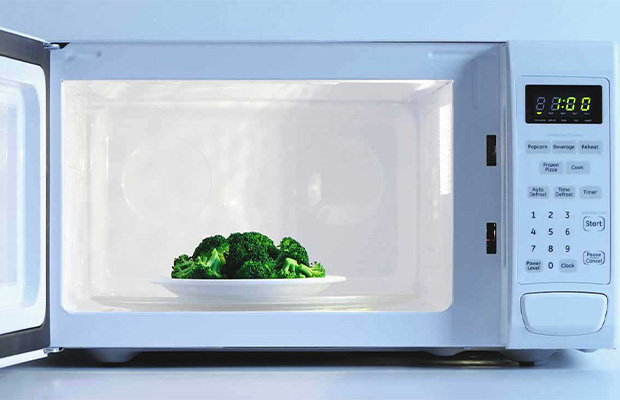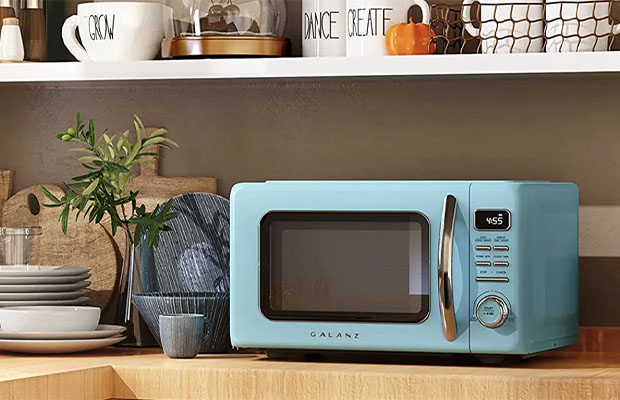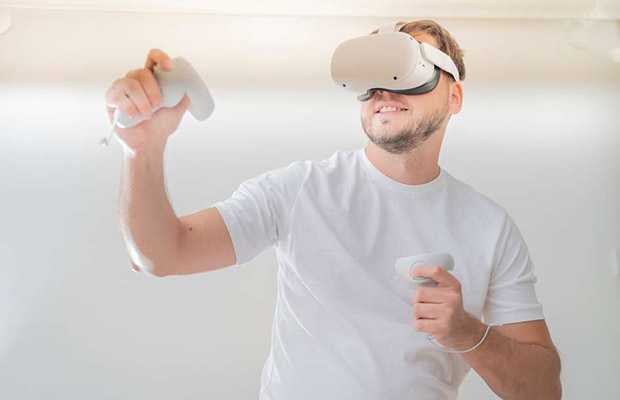Microwaves are a standard appliance in almost every home and make reheating leftovers or cooking food quick and simple. But if your microwave isn’t working properly, it can be a major inconvenience.
Magnetrons and door switches are just two examples of the components that might be at fault if your microwave is not heating up.
Keep reading and learn more about causes and how to fix it.
Table of Contents
Microwave Oven Operation 101
Microwave ovens all follow the same general principles of operation, despite their differences in size, appearance, and output wattage. The appliance’s control board will send 120 volts of alternating current (AC) through a line fuse, a cavity thermostat, and numerous door switches before the current reaches a high-voltage transformer once a designated power level and cooking time have been chosen. The transformer’s alternating current power output is converted to direct current (DC) using a high-voltage capacitor and a diode, doubling the voltage to almost 5,000 volts, which provides the voltage required to power the magnetron in the appliance. Before entering the oven cavity, radio waves emitted by the magnetron pass through a waveguide.
The radio waves cause the water molecules in the food to vibrate vigorously once they are inside the oven cavity, creating heat that cooks the food from the outside in. The food is typically rotated through the radio waves on a motorized turntable in a microwave to ensure even cooking. Remember that heated water molecules will cause the food to steam as it cooks, which is why toasting bread in a microwave tends to make it soggy. Instead, use a toaster oven to reheat bread products.
The control board also sends voltage to a fan motor to cool the appliance because the high-voltage components can produce a lot of heat when they are operating. If the microwave’s cabinet or oven cavity area becomes too hot, one or more thermostats will prevent overheating by cutting power to the high-voltage system.

Potential Causes Of Microwave Not Heating Up
High Voltage Diode
If your microwave doesn’t heat, the high-voltage diode or rectifier may be malfunction. This element aids in supplying the high voltage needed to power the magnetron. The magnetron and high-voltage capacitor are close to the high-voltage diode, so opening the cabinet will be necessary. To avoid an electrical shock, turn off the power and let the high-voltage capacitor discharge.
The diode can then be checked for continuity using a multimeter. Due to the polarity-specific nature of diodes, you should observe low resistance with the meter leads pointing in one direction and higher resistance with the meter leads pointing in the opposite direction. Most multi-meters have a special setting for rectifiers or diodes. The high-voltage diode needs to be replaced if it exhibits low resistance in both directions or no continuity at all. Determining whether power is being supplied to the circuit is necessary if the high-voltage diode tests come back positive. A qualified technician should be the only one to conduct additional testing on this high-voltage circuit.
Door Switch
You might have a door switch issue if your microwave doesn’t heat up. The door switches, also known as interlock switches, turn on the microwave’s various components when the door is closed and turn it off when the door is open. When an interlock switch malfunctions, it is occasionally possible that the fan motor and/or stirrer motor will keep running, but the magnetron won’t. The hooks or latches on the door activate the interlock switches, which are located inside the cabinet. Remove the cabinet and unplug the appliance. Wires will be connected to the interlock switches’ terminals denoted by the letters common (C) and normally open (NO).
Using a multimeter, check the switches for continuity. You ought to be able to see continuity between these terminals when the actuator button is depressed. It will be necessary to replace the switch if there is no continuity. Additionally, make sure the door hooks correctly engage the switch actuator when the door is closed and make any necessary adjustments.
Magnetron
You might have a problem with the magnetron if your microwave doesn’t heat. The microwaves that produce the heat are provided by this component, which is a part of the high-voltage circuit. If the magnetron is broken, the device might blow a fuse or the other features might still be working properly. The cabinet must be removed in order to reach the magnetron. To avoid an electric shock, turn off the power and discharge the high-voltage capacitor.
The two attached wires can then be disconnected after locating the magnetron. Connect a multimeter’s leads to the magnetron terminals and test for continuity. The resistance between these terminals ought to be no more than a couple of or three ohms. The magnetron needs to be replaced if there is no continuity. Additionally, make sure there is continuity between the magnetron’s grounded outer case and both terminals. The magnetron needs to be replaced if there is any continuity between either of the terminals and the ground. Live voltage tests may be necessary and should be referred to a qualified individual if the continuity checks do not reveal any flaws.
Read More: How Hot Does a Microwave Get?
Other Tips
Check To See If The Timer Has Not Been Set To Start Cooking Early.
The fact that we as users sometimes cause microwaves to malfunction is embarrassing. Given that we typically only need a few minutes to pop a bag of popcorn or sterilize a cutting board, it’s likely that most of us have rarely used the extra feature buttons on our microwaves. If your microwave won’t heat, you might want to make sure the delay timer wasn’t set to start cooking later. If the timer is difficult to cancel, you can always unplug the microwave for a short period of time to reset the system.
Related Reading: How To Set Clock On Samsung Microwave?
Be Careful Not To Heat Anything That Can’t Be Microwaved.
Although it may surprise you, microwaves are unable to fully reheat some foods. They are useful for warming water, reheating leftovers, and many other things. It’s a good idea to make sure you’re not heating up extremely dry or fat-free foods, even though it’s rare to make this mistake. Microwaves essentially heat up the water and fat molecules in food better than they heat up other molecules, despite the fact that the physics underlying the phenomenon is more complicated. Therefore, if your food isn’t heating up quickly enough or not heating at all, it could be because it’s either fat-free, extremely dry, or both. To be safe, keep in mind that some foods and materials should never be heated in the microwave. Heating metals can seriously harm your appliance (and even your house), and defrosting meat in the microwave can be dangerous due to bacterial growth.
Safety Comes First When Repairing A Microwave
Be aware that repairing this appliance carries a significant risk of injury or death if safety precautions aren’t taken due to the high voltage and high current used by microwave ovens. Any time you want to disassemble the microwave, always unplug it first. We advise that only qualified professionals access and replace internal components because high-voltage capacitors used in microwaves may retain a charge even after the microwave has been unplugged.
If you do need to access internal components, you should make sure the capacitor is fully discharged immediately after removing the microwave’s shroud or cover. Although the bleeder resistor in the majority of high-voltage capacitors used in modern microwave models should automatically discharge the capacitor after the voltage has been discontinued, it’s always a good idea to verify this by attempting to discharge the capacitor manually. To accomplish this, cross the terminals of each set of capacitors with a screwdriver blade or a pair of needle-nose pliers. The screwdriver or pliers handle needs to be insulated, and you shouldn’t touch the metal part of the tool when it’s in contact with the terminals.
You May Also Like:



MOST COMMENTED
How to
How to Clean Homedics Humidifier: Detailed Guide
How to
Are Humidifiers Good for Pneumonia? Complete Guide
How to
Can You Put Drano in a Dishwasher? (Facts & Safe Alternative)
How to
How to Turn Subtitles on Or Off on Peacock TV: 2023 Guide
How to
How to Get Rid of Hollow Arrow on iPhone? 2 Simple Ways
How to
How to Mirror iPhone to TV Without WiFi: Complete Guide
Computers, Tablets & Printers
The 5 Best Printers for Cricut in 2022